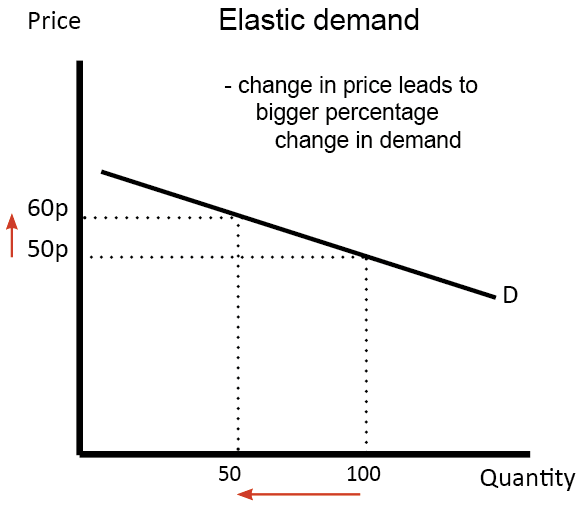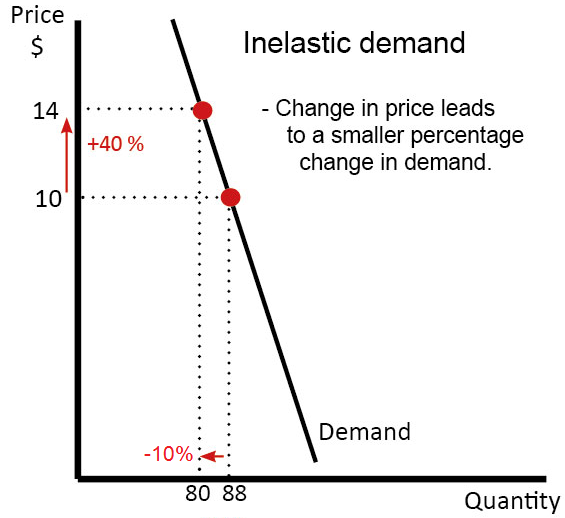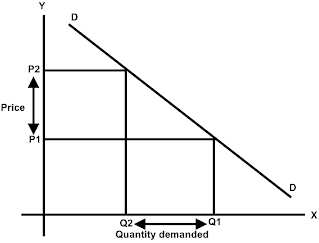Introduction
Price elasticity is a parameter used in determining the sensitivity of demand towards prices. Price sensitivity in customers can be induced by a myriad of economic factors, ranging from a lack of resources in the target customers to the presence of competition providing similar products. It is one of the key factors that determines the pricing policy of a company. Price elasticity enables businesses extract maximum profits while retaining sales and revenues.
Elasticity of demand can be either elastic, inelastic, or unitary. Elastic price stands for greater changes in demand in comparison to price changes. Inelastic price, on the other hand, indicates on lesser changes in demand in comparison to price changes (Shivam). Lastly, unitary elasticity stands for a rare economic condition where the demand changes proportionately to the price. Exploring these three definitions can increase the understanding of price and demand estimations in a market analysis.
Illustration

Fig. 2 presents a graph of elastic demand. As it is possible to see, the changes in demand are significant when compared to changes in prices. As shown here, increasing the price from 50p to 60p led to a drop in quantity from 100 to 50, which is 50% of the total production pool. Such a situation is typical to oligopoly markets, where several competitors produce similar goods in terms of quality, functionality, and price. The rivalry between Coca-Cola and Pepsi are a perfect example of this trend. As they produce nearly identical products, any slight change in prices would cause significant demand changes. Because of this, the companies are watching one another very closely, in order to match the prices as soon as possible.

Fig. 3 presents inelastic demand. For this type of demand, the changes in price lead to less changes in demand as they would in an elastic model. As it is shown on the graph, a change in price by 40% leads only to 10% decrease in quantity of sold goods. This type of elasticity is usually present in goods that are always in demand. Oil and fuel are good examples of such products. A car owner is forced to buy fuel even if the prices for gasoline increase significantly. Otherwise, it would be impossible to drive a car. Nevertheless, the demand is not static – if the prices for fuel become exorbitantly high, individuals would be forced to stop utilizing cars as transportation and instead opt for carpooling or public transportation services.

Unitary elasticity is an occurrence mostly used in theoretical models rather than in real-life calculations. It represents a situation when quantity and price are in perfect correlation to one another. In other words, if the price changes from P1 to P2, as demonstrated in Fig.3, then the quantity demanded changes from Q1 to Q2, and vice versa. The percentage of changes remain equal. Unitary elastic demand for this situation remains at 1. The reason why unitary elasticity exists only in a model of perfect competition, which cannot be found in real life, is because there are numerous factors involved in the marketing mix, that affect elasticity of price. Unitary elasticity graphs for supply and demand are often used to demonstrate the concept of a price equilibrium.
Discussion
The differences between figures 1, 2, and 3 lie numerical values of the elasticity of demand. Ep > 1 represents a relatively elastic demand, while Ep < 1 represents a relatively inelastic demand. Ep = 1 stands for the equilibrium found in unitary elastic demand. However, there are also two perfect conditions, during which the graph is angled at 90 degrees towards X or Y. These conditions stand for perfect elastic and perfect inelastic demand. For a perfectly elastic demand, Ep = infinity, whereas for a perfectly inelastic demand, Ep = 0 (Rittenberg 343). Both of these concepts are purely theoretical and can be used only in purely competitive market scenarios involving homogeneity products.
Conclusion
Elasticity of demand is an important parameter that is used in determining several key features in economics and management. They are used in determination of output, determination of price, price discrimination in the case of a monopolist or a one-product company, and in demand forecasting. Additional areas where elasticity plays a role include government policies, determination of prices for joint ventures, and product dumping.
In determination of output level, it is of paramount importance that the quantity of goods produced corresponds with the demand (Shivam). Without knowing the elasticity of price, it is impossible to determine the demand. The elasticity of price also serves as a basis for price determination. Monopoly discrimination uses price elasticity to determine prices for different markets based on the respective values for those markets. Demand forecasting uses these parameters to help plan long-term production efforts.
Works Cited
Rittenberg, Libby. Principles of Microeconomics. Flat World Knowledge, 2009.
Shivam, Nick. “What is the Importance of Elasticity of Demand?” Economics Discussion.